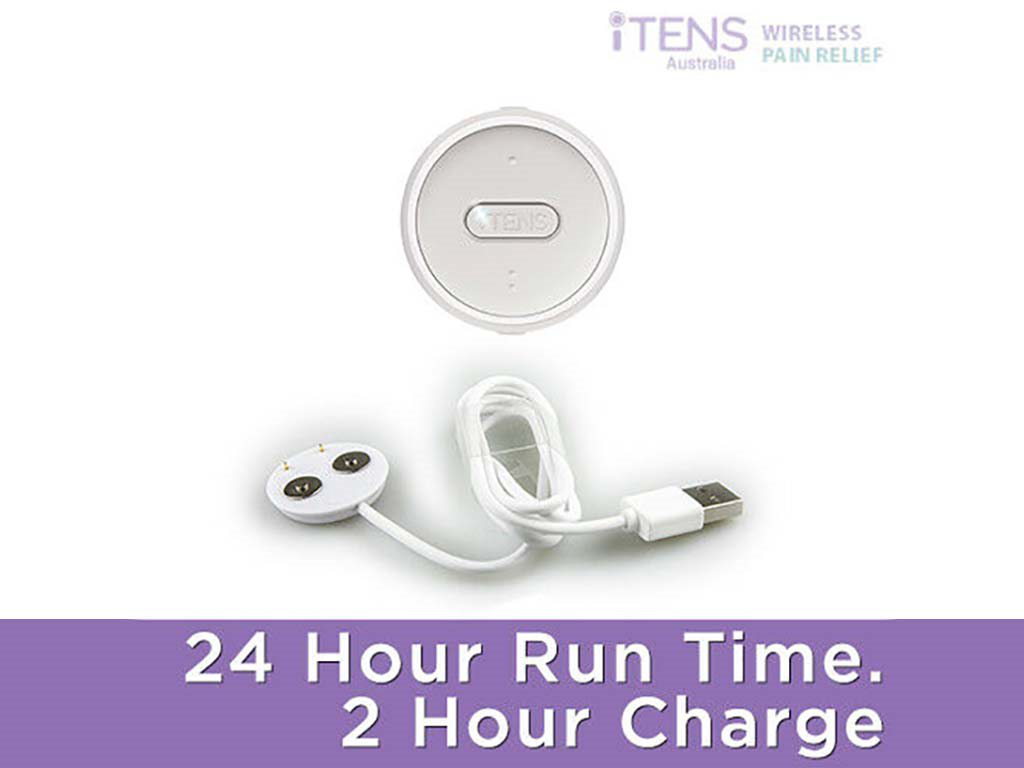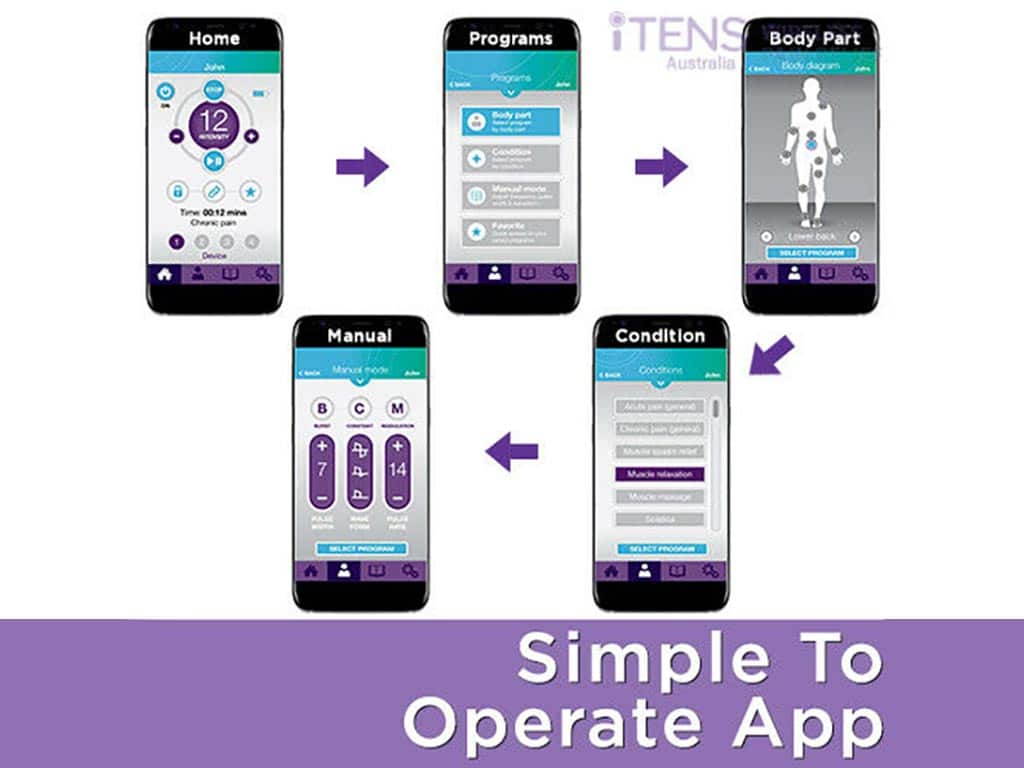
Rechargeable TENS EMS units are in demand to help individuals with various pain conditions. Transcutaneous Electrical Nerve Stimulation (TENS) and Electrical Muscle Stimulation (EMS) are techniques in physical therapy to help improve body conditions. TENS is for pain relief, while EMS is for muscle stimulation. They provide plenty of advantages, including on-demand use, without going to a facility. Moreover, rechargeable machines are more energy-efficient and cost-saving. Hence, they are convenient for long-term use.
Many people use electrotherapy devices like TENS and EMS to aid in pain management and rehabilitation. They are two different therapies with distinct purposes. However, some devices, like the wireless iTENS, combine TENS and EMS in one unit. Therefore, many use them as alternatives to drugs. They also complement other therapy methods to maximise pain relief benefits. The following sections will provide information on TENS and EMS uses, their advantages, and device features.
Functions of a Rechargeable TENS EMS Unit
Doctors and physical therapists may recommend TENS and EMS to help with different pain types and conditions. Because both methods utilise electrical currents, some people confuse them with each other. Thus, it is vital to get the right device for the correct treatment. Conveniently, rechargeable TENS EMS units are available for people who need pain relief and muscle stimulation. A TENS machine targets the nerves to reduce pain, while EMS stimulates the muscles for strengthening and reconditioning.
Each electrotherapy type uses varying frequency ranges to produce specific feedback. A TENS machine works by stimulating the sensory nerves to block pain signals and release endorphins. Using a frequency of 50-120 Hz induces the “neural gates” in the spinal cord to close. As a result, it hinders the pain signals from reaching the brain. On the other hand, a low frequency of 2-10 Hz triggers endorphin production, the body’s natural painkillers.
In comparison, EMS uses higher pulse rates to cause involuntary muscle contractions. These contractions are similar to when a person perform strength training exercise at a gym. Therefore, EMS helps improve strength without straining the muscles. Moreover, a rechargeable TENS EMS unit includes more functions like massage, relaxation, strengthening, and muscle relief. For instance, a person may stimulate the muscles before a workout and use TENS after to relieve pain.
Benefits of TENS and EMS
- Reduce nerve pains and joint swelling (acute and chronic pain)
- Increase blood flow
- Rehabilitate injuries or damaged nerves and tissues
- Alleviate post-surgery discomfort
- Increase mobility or the range of motion
- Relieve muscle spasms and cramps
- Release muscle tension
- Strengthen weak muscles
- Prevent muscle atrophy
- Improve muscle tone

How Does a Rechargeable TENS EMS Unit Compare to Other Methods
Electrotherapy devices come in various types and features. A rechargeable TENS EMS unit is a combo device with broader treatment settings. In addition, it provides many advantages over traditional machines and other pain relief methods. Firstly, it is portable and easy to use anywhere. Because it utilises electricity, it needs sufficient power to sustain long sessions. A device with rechargeable batteries, like the iTENS, helps ensure it is always ready to use.
Rechargeable TENS and EMS machines have built-in batteries, making them cost-efficient. It eliminates the need to buy new batteries regularly. Thus, it helps save money in the long run. A single full charge has a total running time of up to 24 hours. It is important to always use new or fully charged batteries to ensure adequate stimulation. Additionally, monitor the battery indicator of the device to check if it is low on power or needs recharging.
Furthermore, rechargeable TENS and EMS units are convenient devices. They are non-invasive and have no adverse side effects. Users may use them while working or being active without limiting movements. Since they do not pose significant risks, it is safe to use as often as needed. Anyone may use them with minimal or no supervision. However, it is best to consult a doctor or physiotherapist for advice on using TENS and EMS therapies.
Operating Guidelines
- Place the electrode pads on the target area while the unit is off.
- Turn the machine on and start at the lowest level.
- Customise your treatment or select a pre-set program.
- Gradually increase the intensity until it feels strong but comfortable.
- After the session, turn the device off before removing the pads.

Other Features of Rechargeable TENS EMS Units
Rechargeable TENS EMS units come in wired or wireless electrodes. Traditional devices have a handheld controller and lead cables connecting to the adhesive pads. Thus, users may adjust the settings from the remote control. In contrast, wireless TENS devices utilise Bluetooth to pair with a smartphone app. Because it does not use lead cables, they are more compact and discreet. Moreover, they contain more features and programs through an app.
In particular, the iTENS smartphone app provides customisation and pre-set modes for easier use. From the menu, you may select a treatment based on specific body parts or health conditions. This minimises the time to set up the device and start pain management immediately. Alternatively, you may personalise the TENS parameters (pulse rates, pulse width, intensity) under manual mode operation. Since pain relief may differ between people, trying various settings help find the most effective results.
Rechargeable TENS and EMS units also offer various electrode pad options. Using appropriate-sized pads for particular body parts allows optimal placement, which improves treatment. For example, the iTENS have innovative wing-shaped electrodes in three sizes. The small wings are ideal for tight or uneven areas like the ankles and wrists. On the other hand, large wings are suitable for the back and legs. Lastly, long strip pads are for elongated treatment areas.
When Not to Use TENS and EMS
Electrotherapy devices are generally safe for most people. However, it may not be advisable for some people and situations, such as:
- people with cancer, epilepsy, or heart problems
- pregnant women
- near an electrical-implanted device like a pacemaker and defibrillator
- in or near water
- while sleeping, driving, or operating machinery
Conclusion
A rechargeable TENS EMS unit is cost-efficient for pain management and muscle stimulation. It provides many benefits, including natural and non-invasive treatments. Also, it uses mild electrical currents that are mild and painless. Moreover, it is effective without needing drugs and other risky methods. Therefore, it is efficient for frequent or long-term use. In addition, since it is rechargeable, it reduces the cost of buying new batteries regularly. Hence, it is more cost-efficient than other devices or methods.
TENS and EMS machines come in various kinds. Mainly, they differ in the types of electrodes, such as wired and wireless. Additionally, each device contains a different number of programs or treatment modes. A wireless TENS unit, like the iTENS, offers several pre-set modes and customisation options through a smartphone app. For the most effective results, you may consult with a physician to help determine the right therapy or treatment settings for your condition.







